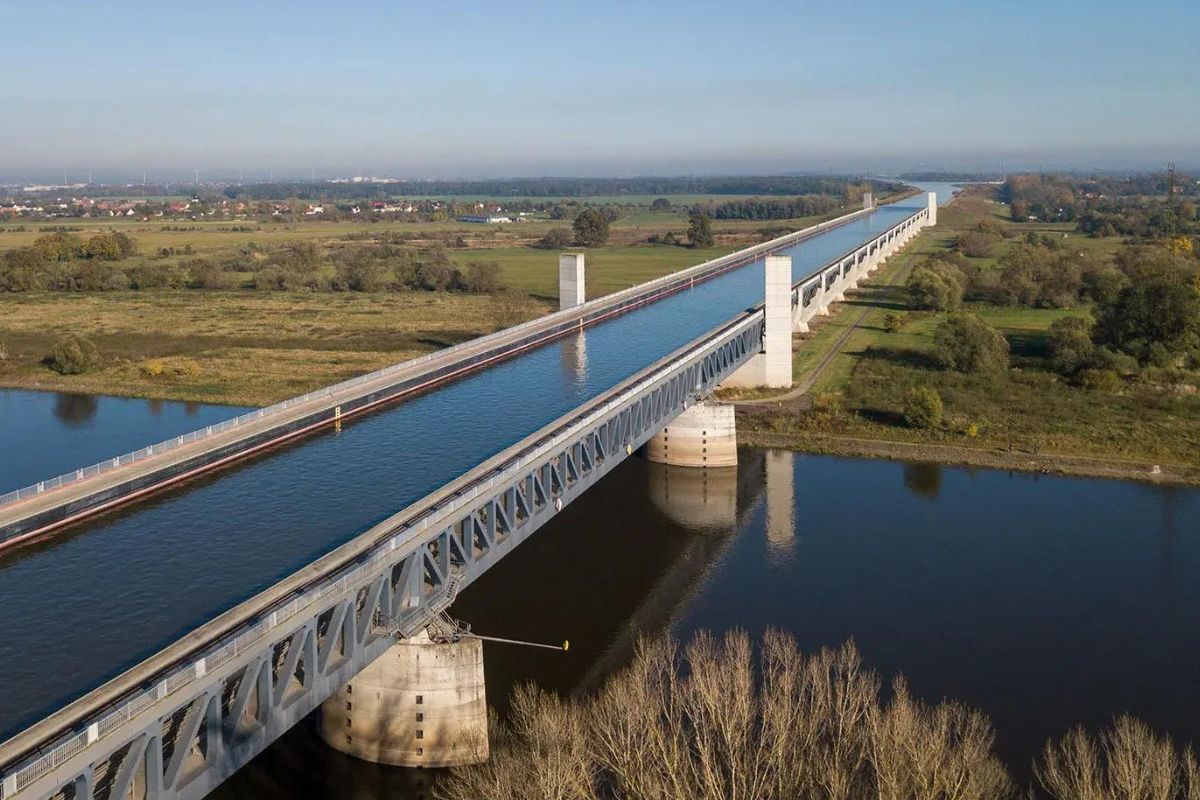Forgotten Canals Of The Eastern United States

Ever wondered about the hidden waterways that once played a crucial role in America's growth? The forgotten canals of the Eastern United States hold stories of bustling trade, engineering marvels, and communities built around them. These canals, now overshadowed by modern highways and railroads, were once the lifelines of commerce and travel. From the Erie Canal in New York to the Chesapeake and Ohio Canal in Maryland, these waterways connected towns, transported goods, and shaped the economy. Today, many of these canals have been transformed into scenic trails, offering a glimpse into the past. Join us as we explore the history, significance, and current state of these fascinating canals.
Forgotten Canals of the Eastern United States
The Eastern United States is home to many hidden gems, including forgotten canals that once played a crucial role in transportation and commerce. These waterways, now overshadowed by modern infrastructure, offer a glimpse into the past. Let's dive into some of these fascinating canals.
Erie Canal, New York
The Erie Canal is perhaps the most famous of the forgotten canals. Completed in 1825, it connected the Great Lakes with the Atlantic Ocean, transforming New York into a bustling trade hub.
- Lockport Locks: These impressive double locks were engineering marvels of their time, allowing boats to navigate the steep Niagara Escarpment.
- Schoharie Crossing State Historic Site: This site preserves the remains of the original Erie Canal, including aqueducts and towpaths.
- Erie Canal Museum: Located in Syracuse, this museum offers exhibits and artifacts that tell the story of the canal's construction and impact.
Chesapeake and Ohio Canal, Maryland
The Chesapeake and Ohio Canal (C&O Canal) was built to connect the Potomac River with the Ohio River, facilitating the transport of coal and other goods.
- Great Falls Tavern Visitor Center: This historic building offers exhibits on the canal's history and provides access to scenic hiking trails along the Potomac River.
- Paw Paw Tunnel: An engineering feat, this tunnel stretches over 3,000 feet and took 14 years to complete.
- Cumberland Terminus: The western end of the canal, where visitors can explore the Canal Place Heritage Area and learn about the canal's role in the region's development.
Delaware and Raritan Canal, New Jersey
The Delaware and Raritan Canal was a vital transportation route in the 19th century, linking the Delaware River with the Raritan River.
- Princeton Basin: A picturesque spot where visitors can enjoy walking or biking along the canal towpath.
- Kingston Lock: One of the many locks along the canal, offering a glimpse into the canal's operational past.
- Blackwells Mills: This historic site includes a restored lock tender's house and offers insight into the daily life of those who worked on the canal.
Morris Canal, New Jersey
The Morris Canal was known for its innovative use of inclined planes to lift boats over the hilly terrain of northern New Jersey.
- Waterloo Village: A restored 19th-century canal town that offers a look at life along the Morris Canal.
- Plane 9 West: One of the best-preserved inclined planes, showcasing the unique technology used to navigate the canal's elevation changes.
- Lock 2 East: A historic lock that provides a glimpse into the canal's engineering and operation.
Miami and Erie Canal, Ohio
The Miami and Erie Canal connected the Ohio River with Lake Erie, playing a crucial role in the state's early development.
- Providence Metropark: Home to a restored section of the canal, including a working lock and a replica canal boat.
- Lockington Locks: A series of six locks that highlight the canal's engineering and importance in the region's history.
- Delphos Canal Commission Museum: This museum offers exhibits on the canal's construction, operation, and impact on Ohio's growth.
Lehigh Canal, Pennsylvania
The Lehigh Canal was built to transport coal from the mines of northeastern Pennsylvania to markets along the Lehigh and Delaware Rivers.
- Jim Thorpe: A charming town with a rich history, including remnants of the Lehigh Canal and a scenic train ride along the river.
- Lock 44: A well-preserved lock that offers a glimpse into the canal's operational past.
- Weissport Canal Park: A beautiful park that includes a restored section of the canal and offers recreational opportunities for visitors.
Wabash and Erie Canal, Indiana
The Wabash and Erie Canal was the longest canal in the United States, stretching from Toledo, Ohio, to Evansville, Indiana.
- Delphi Canal Park: This park features a restored section of the canal, including a replica canal boat and interpretive exhibits.
- Canal Park in Huntington: A scenic spot where visitors can explore the remains of the canal and learn about its history through interpretive signs.
- Wabash and Erie Canal Interpretive Center: Located in Delphi, this center offers exhibits and programs that tell the story of the canal's construction and operation.
Rediscovering Hidden Waterways
Exploring the forgotten canals of the Eastern United States offers a unique glimpse into the past. These waterways, once bustling with activity, now provide peaceful retreats for nature lovers and history buffs. From the Erie Canal in New York to the C&O Canal in Maryland, each has its own story and charm. Visiting these canals can be a relaxing way to spend a weekend, whether you're hiking, biking, or simply enjoying the scenery. They remind us of a time when waterways were vital for transportation and commerce. Next time you're planning a trip, consider adding one of these hidden gems to your itinerary. You'll not only enjoy beautiful landscapes but also learn about an important part of American history. So grab your walking shoes, pack a picnic, and set out to rediscover these forgotten treasures.

